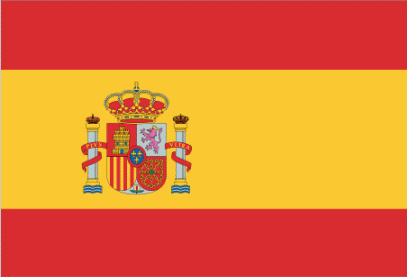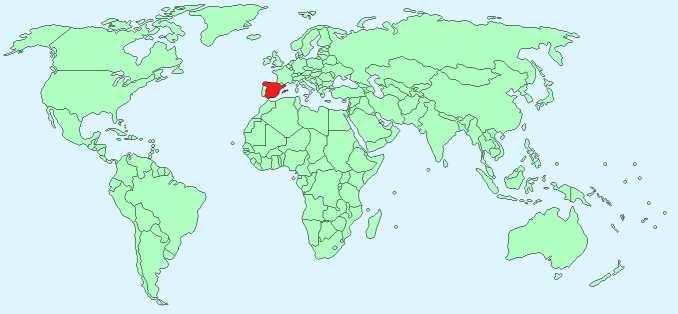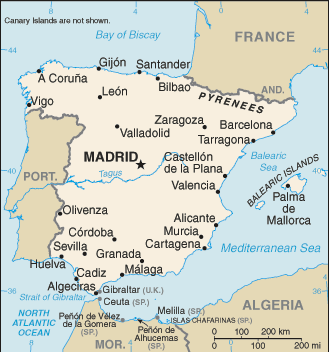Spain


Continent – Europe
Region – Western Europe
Size – 505,370 km²
Geography – mountainous in the north, large flat plateaux
Language – Spanish, Catalan, Basque
Religion – Roman Catholic 94%, other 6%
Monetary Unit – Euro
Natural Resources – coal, lignite, iron ore, copper, lead, zinc, uranium, tungsten, mercury, pyrites, magnesite, fluorspar, gypsum, sepiolite, kaolin, potash, hydropower, arable land
Agriculture – grain, vegetables, olives, wine grapes, sugar beets, citrus; beef, pork, poultry, dairy products; fish
Industry – textiles, food, beverages, metals, chemicals, shipbuilding, automobiles, machine tools, tourism, clay products, footwear, pharmaceuticals, medical equipment

Neighbouring Countries – France, Andorra, Portugal
Population – 48,146,134 (2015 estimate)
Population Growth Rate – 0.89%
Average Life Expectancy – 81.57
Capital City – Madrid (6,199,000)
Highest Mountain – Pico de Teide (Tenerife) (3,718 m)
Longest River – Tagus (716 km in Spain and Portugal)
Climate – Maritime in North – cool winters 1°C to 16°C, warm summers 14°C to 30°C, Mediterranean in South – mild winters – 6°C to 18°C, hot summers 15°C to 35°C
Yearly Rainfall – 57 cm (approx)
Plant Life – oak, chestnut, elm, beech, poplar, pine, juniper, cork,
Animal Life – Iberian wolf, lynx, wild boar, fox, wildcat, deer, Spanish ibex
Bird Life – duck, flamingo, heron, crane, bustard, eagle, vulture, hawk, owl, goshawks
Fish Life – sardine, sea bass
Harvard Reference for this page:
Heather Y Wheeler. (2016). Spain. Available: https://www.naturalhistoryonthenet.com/Facts_Figures/Country_Facts/spain.htm. Last accessed Tuesday, July 19, 2016
Facts and Figures Pages
